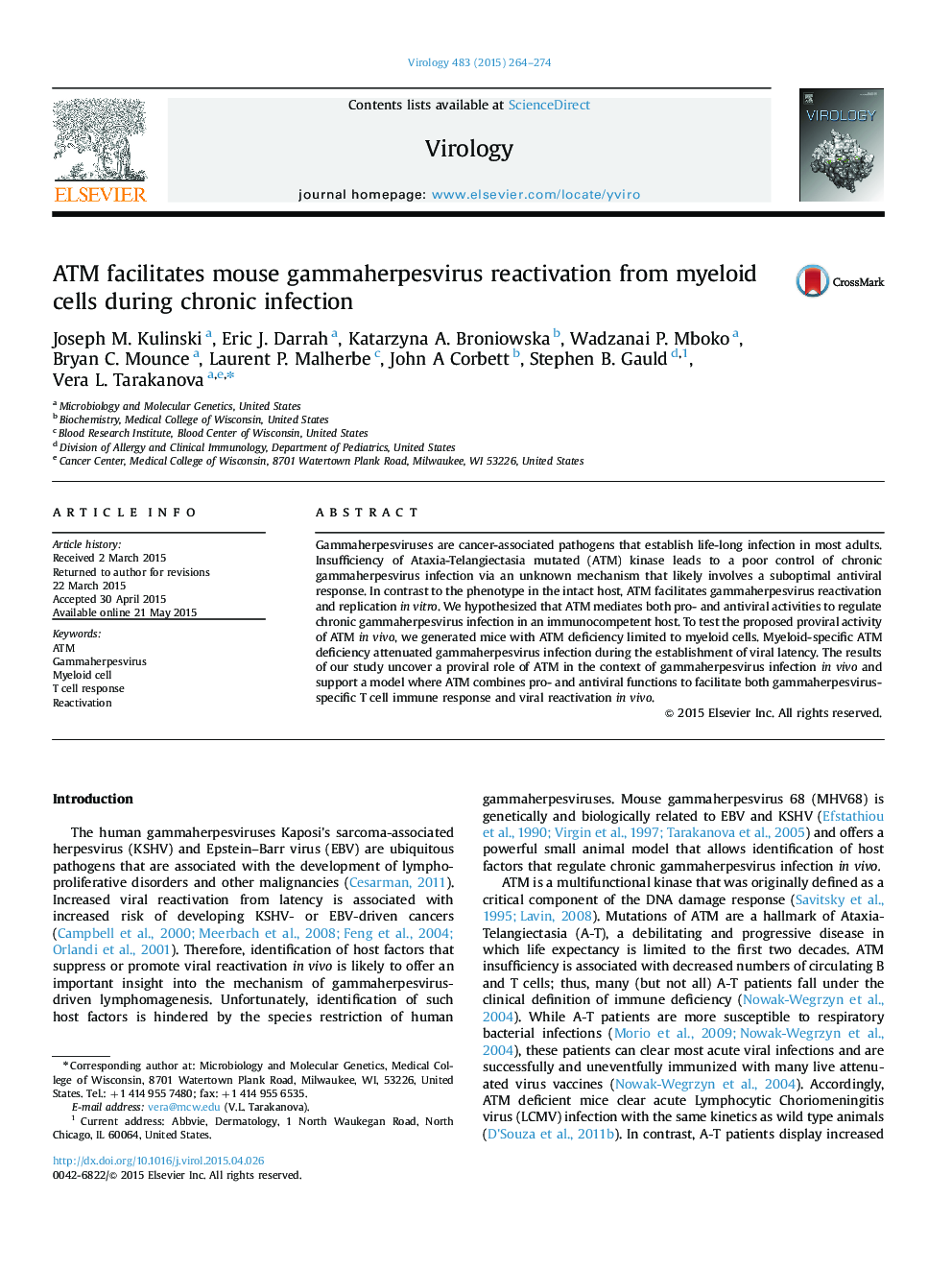| Article ID | Journal | Published Year | Pages | File Type |
|---|---|---|---|---|
| 6139323 | Virology | 2015 | 11 Pages |
â¢Mouse model of myeloid cell-specific ATM deficiency.â¢ATM facilitates the establishment of gammaherpesvirus latency in myeloid cells.â¢ATM is not required for the maintenance of peritoneal myeloid cell population.â¢Myeloid cell-specific ATM deficiency does not affect antiviral immune response.
Gammaherpesviruses are cancer-associated pathogens that establish life-long infection in most adults. Insufficiency of Ataxia-Telangiectasia mutated (ATM) kinase leads to a poor control of chronic gammaherpesvirus infection via an unknown mechanism that likely involves a suboptimal antiviral response. In contrast to the phenotype in the intact host, ATM facilitates gammaherpesvirus reactivation and replication in vitro. We hypothesized that ATM mediates both pro- and antiviral activities to regulate chronic gammaherpesvirus infection in an immunocompetent host. To test the proposed proviral activity of ATM in vivo, we generated mice with ATM deficiency limited to myeloid cells. Myeloid-specific ATM deficiency attenuated gammaherpesvirus infection during the establishment of viral latency. The results of our study uncover a proviral role of ATM in the context of gammaherpesvirus infection in vivo and support a model where ATM combines pro- and antiviral functions to facilitate both gammaherpesvirus-specific T cell immune response and viral reactivation in vivo.
